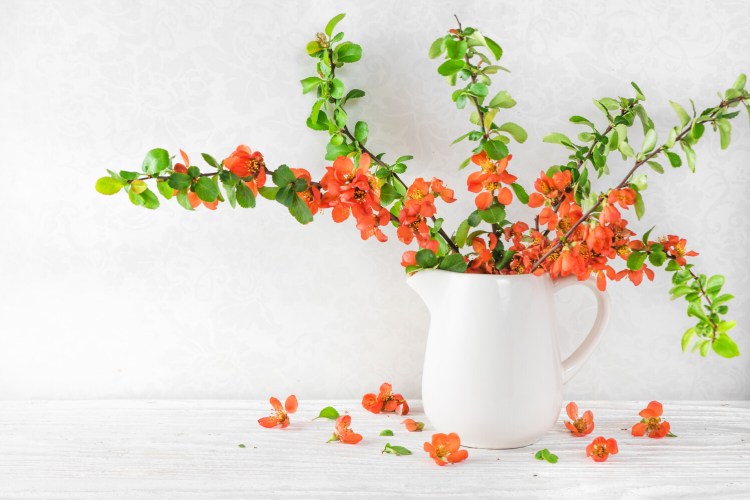This is the hardest time of the year for me. The days are getting longer, but it is still too early to do anything outdoors except – maybe if there is no snow on the ground – walk around the yard and see how the plants weathered the winter.
Basically I am bored, and that boredom cannot be solved completely by duplicate bridge, a few wonderfully enjoyable days skiing with the grandchildren or nervously watching the presidential campaign.
Some years it is warm and snow-free enough to go outside and collect the pile of leaves that harsh winter winds always dump on our patio and behind the garage, but that doesn’t take long and isn’t particularly entertaining.
We take our pleasures where we find them. The Maine Flower Show at Thompson’s Point in Portland on March 25-29 will help, but it’s still weeks distant. For now, my wife Nancy and I are enjoying all the spring bulbs that are blooming. It is too early for them to blossom outside, of course, but we are part of a group that sold bulbs as a fundraiser last fall, and we purchased the leftovers. We didn’t get them all in the ground, so planted those that remained in pots, left them in the unheated garage, eventually brought them inside and watched them blossom.
This is a fairly common practice with Tete-a-Tete daffodils and tulips, but we are also having success with such varieties as Iris reticulata, which is short and has dainty, multicolored blossoms.
In February, we cut some quince branches, put them in a vase and are watching them blossom in our sunny dining room. It’s not too late to do this in early March, and it will work with any spring-blooming shrub. Many years ago we did the same with a magnolia. Forcing spring blossoms also works on dogwoods, crabapples, redbud and, perhaps the most popular of all, pussy willows.
This is also the time when people who grow more vegetables and/or are more serious about saving money than Nancy and I are start their vegetable seedlings. People typically start with onions; pepper seeds are planted at the end of March, kale and cabbage in mid-April and tomatoes the last week of April. Nancy and I stopped starting seedlings when our children got out of college because we didn’t feel as broke. It wasn’t worth the effort for the few seedlings we needed, and we got tired of setting up the fluorescent lights above our Ping Pong table.
Add it all up and all I have left to do is get my tools ready for the gardening season. Most garden writers advise doing this in the fall when the garden season ends, but I enjoy being outside then. Fall fishing is excellent, the foliage is wonderful and then there are the holidays to keep us busy.
I have not abused the tools by ignoring their maintenance until spring. They are either hanging from hooks in the garage or neatly stored in an old apple box in the basement. The major task is sharpening. We use inexpensive hand pruners (the technical name is “secateur,” but I don’t know anybody who uses it) because I have lost too many pairs of $70 Felcos. The low-price model requires more sharpening than the Felcos. During gardening season I put the dull pruners in a separate pile and sharpen them on a rainy day. Loppers – basically larger versions of hand pruners – get the same treatment.
I have a special tool that comes in two parts for sharpening them. One part screws tightly on the back of the cutting blade. The sharpening part goes through one of the holes in the first part, so you get the correct angle on the blade. Run the sharpener over the edge several times, and test the sharpness with your finger.
We also bought – and I will use it for the first time this year – a diamond sharpening stick. I just will have to figure out the correct sharpening angle by myself.
Pruning saws take the longest time. We favor Japanese pruning saws that cut on the pull stroke. These must be sharpened with a feather file, which is $15 or more for a very small file, and the previous two I have used chipped easily along the edges. Put the saw in a vise, sharpen in one direction by running the file along the tooth several times, flip the saw in the vise and sharpen in the other direction.
I also sharpen spades, shovels and edgers, using a hand file. Then I will oil them, and they will be ready for the coming season.
This has nothing to do with gardening, but my Ramblin’ Jack Elliott collection – inspired by the recent Rolling Stone profile of the singer – and the Dylan Bootleg Series Volume 15, featuring Johnny Cash, will be playing during my tool-maintenance work.
I will be a happy man.
Tom Atwell is a freelance writer gardening in Cape Elizabeth. He can be contacted at: tomatwell@me.com.
Send questions/comments to the editors.



Success. Please wait for the page to reload. If the page does not reload within 5 seconds, please refresh the page.
Enter your email and password to access comments.
Hi, to comment on stories you must . This profile is in addition to your subscription and website login.
Already have a commenting profile? .
Invalid username/password.
Please check your email to confirm and complete your registration.
Only subscribers are eligible to post comments. Please subscribe or login first for digital access. Here’s why.
Use the form below to reset your password. When you've submitted your account email, we will send an email with a reset code.